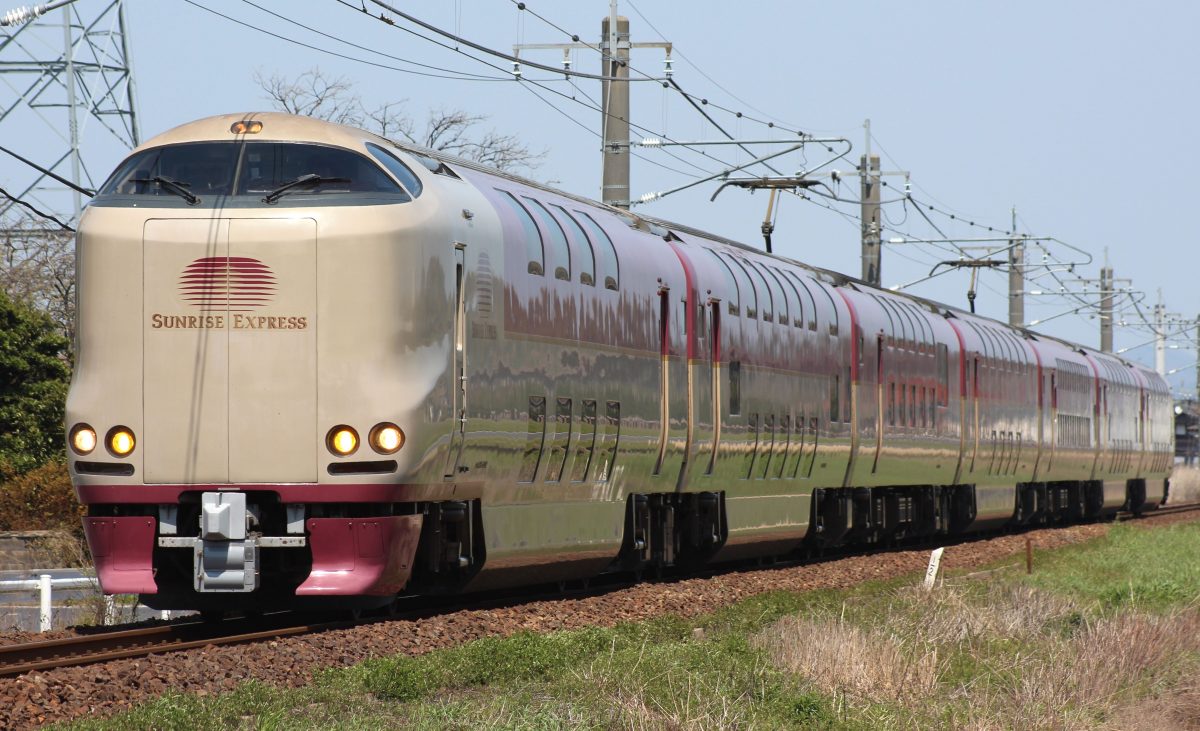While many people choose to fly or take a bullet train, the still-popular overnight trains are a real treat for international travelers. Why take a night train? These trains allow you to travel quickly overland, arriving at your destination by the following morning. Also, you will be able to sleep while you travel, more comfortably than on an airplane or an overnight bus. If you are planning a visit to Japan, consider booking travel on one of these trains, using the following tips.
Before the advent of the bullet train, there was a time when overnight trains were common across Japan. The country’s elite, as well as tourists, traveled in style using these “blue sleeper trains.” Today, however, luxury night trains are becoming a novelty, harkening back to an earlier time, and cheaper trains. Currently, the Sunrise Seto and Izumo are the only regular night trains still in operation.
Table of Contents
What is a Japanese sleeper train like?
Japanese overnight trains differ somewhat from western sleeper trains in the accommodations offered. Some of the trains do not have normal seating; many have carpeted areas separated by a partition.
Within your open, partitioned “room,” called nobi nobi seats, you will find usually a window, a small table built into the wall, and some bedding and blankets to recline on. Other trains offer shared or private compartments with western style beds, and the luxury trains have the option of reserving a suite.
The Sunrise Express routes
The Sunrise is unique in its operation. Between Tokyo, Himeji, and Okayama, the Seto and Izumo trains are coupled together. At Okayama, they are detached.
The Seto then runs southbound to Takamatsu (Kagawa, north of Shikoku island), and the Izumo goes north to Matsue and Izumo, in the Shimane Prefecture. On the return trip to Tokyo, the trains also stop at Osaka.
Prices of the Sunrise Express
The Japan Rail Pass will cover the base fare on overnight trains, including the Sunrise Express. You may be asked to pay an additional lodging fee or limited express fee.
On the Sunrise Express, supplemental fees range from ¥9,500 to ¥17,000, depending on the accommodations selected.
The JR Pass essentially provides a discount of ¥10,000 to ¥20,000 off the entire price. In other words, you save the price of the ticket and only have to pay the supplement.
When you use simple seating, additional fees often do not apply. For example, the nobi nobi seating on the Sunrise does not incur an additional charge; the JR Pass covers such accommodations entirely.
How to make a reservation
Ticket sales for overnight trains generally begin one month before the departure date. Tickets sell out very fast, so if you wish to enjoy this experience during your Japanese vacation, you must begin planning early. As there is currently no way to reserve overnight train tickets online, seat reservation must be made on the telephone or at the ticket office.
This can prove tricky for international travelers. As phone lines are often busy, having a friend residing in Japan to book the tickets for you is a good option. If you will be staying in Japan for more than thirty days, you can book the tickets yourself upon arrival in the country. First, you will purchase your Japan Rail Pass, then make reservations for the time that your pass will be active.
Accommodation types
If you’re seeking privacy and a good night’s sleep, the Sunrise has you covered.
“Type A” cabins host a single bed, and “Type B” cabins house twin beds. This train also features nobi nobi seats (basic-fare reclining seats), showers, toilet facilities, power outlets, and vending machines.
Small lounges are also available. Keep in mind that no luggage compartments are available, so you will need to keep your belongings with you in your accommodations.
Moonlight Nagara
Also included in the JR Pass is the Moonlight Nagara, a rapid overnight service train that operates between Tokyo and Ogaki. This train runs seasonally during the busy periods of spring (two weeks from late March to early April), summer (late July to the end of August), and the Christmas and New Year holiday season.
This train, which started operating seasonally in 2009, is nowadays an overnight rapid transfer between Tokyo, Nagoya, and Ogaki. As it is connected to other local trains, it also facilitates the connections between Tokyo, Kyoto, and Osaka.
It has 11 stops in total: Tokyo, Shinagawa, Yokohama, Odawara, Numazu, Shizuoka, Hamamatsu, Toyohashi, Nagoya, Gifu, and Ogak. However, only the train to Ogaki stops at Odawara station, and only the train to Tokyo stops at Toyohashi station.
Despite being included in the JR Pass, you cannot reserve a seat online and the tickets are on sale one month prior to departure date. You need to get a reserved seat before you ride but it is actually very hard to reserve a seat as all cars are reserved seat only, this means that there are no green cars or even non-reserved cars either.
Seven Stars Kyushu
The Seven Stars Kyushu is another option. This train operates on the island of Kyushu, winding slowly through picturesque scenery to be enjoyed through large picture windows. The Seven Stars offers two and four-day itineraries, in which the train stops for a number of excursions.
Train Suite Shiki-Shima
JR East has begun operating a luxury train, the Shiki-Shima train, with several routes varying from 2 to 4 days., depending on the season. Itineraries will go from Ueno Station in Tokyo to Nikko, Hakodate and Aomori.
Twilight Express Mikukaze
JR West also operates a “superluxury sleeper train”, the Twilight Express Mikukaze, with tickets ranging from ¥270,000 to ¥1.25 million. It coverd routes from Kyoto and Osaka to Shimonoseki, on the Yamaguchi Prefecture, and an inbound trip using the Sanyo main line.
On your next trip to Japan, why not let the melodic clickity-clack of a luxury train or night train lull you into a peaceful night travel?
